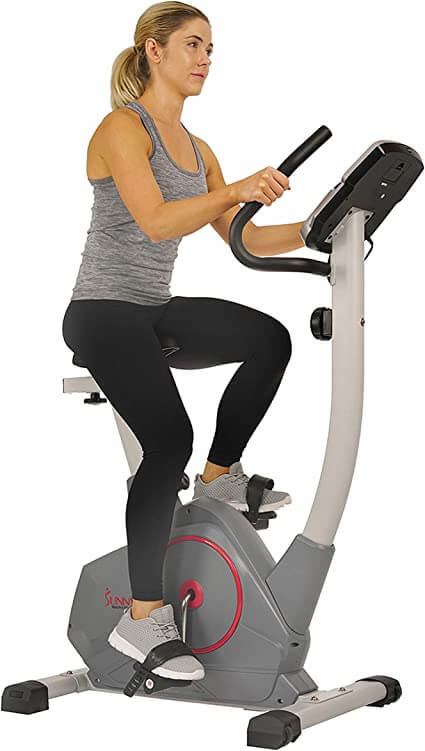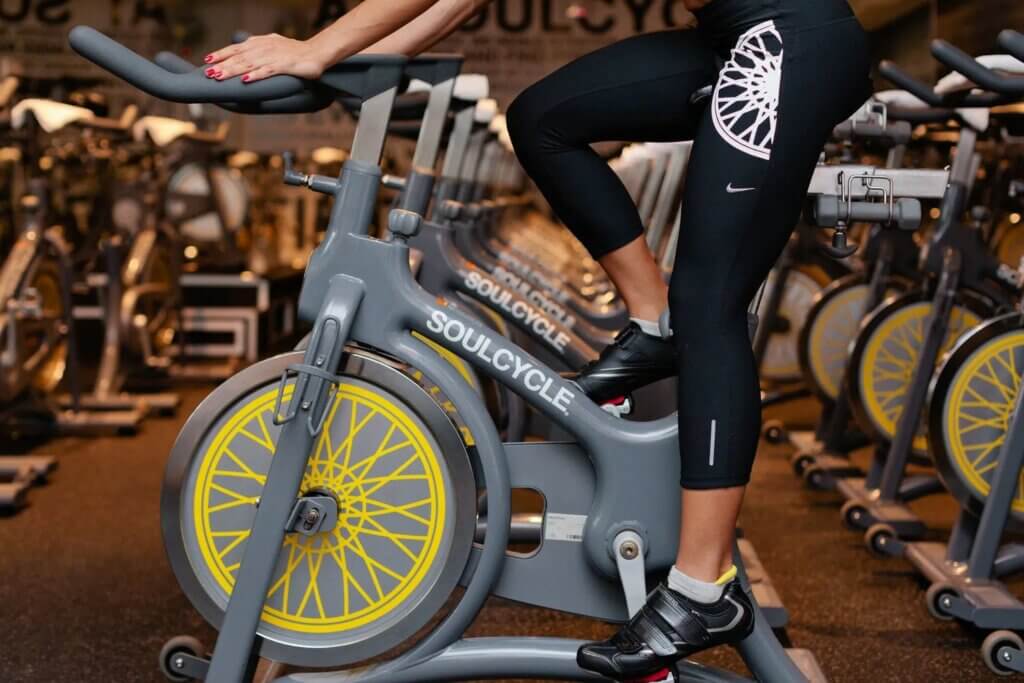Exercise bikes have existed since the late 19th century, though the first models cannot compare to the sleek, cutting-edge machines we see today. Just as it was back then, cycling today is an enjoyable activity with proven health benefits.
Cycling-specific studies highlight that this form of exercise has a positive impact on our cardiorespiratory function and everyday health, not to mention a risk reduction in ailments including obesity morbidity among both men and women.
Cycling is also generally a safe, low-impact sport, making it a suitable form of exercise for individuals living with osteoarthritis. Plus, it can boost your mood. A 2019 study also found that as little as 90 minutes of cycling per week has a positive impact on your mental health.
It’s therefore not surprising that cycling is popular, both at home and in the gym—so popular that the home exercise bike market is expected to grow 8.7% between 2021 to 2027.
Types of Exercise Bikes
There are a number of different exercise bikes on the market, but the primary ones being upright, recumbent, and indoor. Each is designed with a distinctive style and offers varying levels of resistance and durability. Here, we explain the different types of exercise bikes based on design, function, and user suitability so that you can choose the best one for you.

Upright Bikes
Pros
- Versatile positioning
- Full body workout
- Foldable options for ease of storage
Cons
- Discomfort on specific body parts, e.g back and neck
- Seats often uncomfortable
- Higher position can feel unstable
As the name suggests, upright bikes encourage you to sit in an upright position and are devised for you to switch between a sitting and standing position, much like an outdoor road bike. The pedals are positioned directly under your body with a forward lean position promoted in order to reach the handlebars.
Another key feature is the saddle seat, which is narrow in size, allowing your legs to move without obstruction. The downside is a lack of back support.
A study on stationary bikes found that the rectus femoris muscle presented more activity during upright pedaling compared to other types of cycling. The rectus femoris is one of the four quadricep muscles that flex the thigh at the hip and also helps extend the knee. This muscle plays a vital role in our mobility.
In addition, the positioning of the upright bike seat naturally encourages optimal engagement of other muscle groups, including the core. This is especially true when cycling in a standing position.
And in terms of storage, these bikes are manufactured in various designs with foldable options, for storage in smaller spaces. Some have moving handlebars to work the upper body as you cycle. Most feature an electronic display for tracking your speed, distance, and other key metrics.
Recumbent Bikes
Pros
- Comfortable and supportive
- Provides a focused lower body workout
- Less strain on the joints
Cons
- One fixed position
- Less core recruitment
- Cumbersome

The recumbent bike segment is the fastest-growing on the market, mainly due to its availability, and reduced stress on the lower back, as well as its affordability. This type of stationary bike is distinctive for its wider seat and reclined position, which offers added support. It is also positioned lower to the ground than other types of bikes, making getting on and off easier.
Also, its recline results in less stress on the joints because the pedals are further forward. These bikes often have a TV attached for entertainment while working out, as well as a monitor to display your metrics.
Given the added back support, recumbent bikes are an optimal choice for those new to exercise, or who require added back support. These bikes can also offer a serious cardio and lower body workout, depending on your speed, resistance, and workout time. In fact, a 2016 study found that this type of exercise bike elicited similar muscle activity of the trunk and hip muscles compared to other types of bikes.
Indoor Bikes

Pros
- Mimics experience of outdoor cycling
- Ease of altering resistance
- Choice of pedals
Cons
- Saddle can be uncomfortable
- Poor form can lead to injuries
- Can lead to burnout
For those who prefer to speed through their workout, indoor bikes are built for fast pedaling and burning calories. Typically referred to as spin bikes (a trademarked name), these powerful machines became popular with the phenomenon of spin classes.
These bikes’ popularity is still on the rise which can be attributed to innovation. Multiple manufacturers design luxury indoor bikes, often featuring live stream and on-demand functions for a workout at any time of day.
Indoor bikes are convenient for their built-in resistance knobs that allow you to alter resistance with a simple turn, providing easy control of the bike. In addition, the seats and handlebars are adjustable to fit your stature so you can sit or stand while riding, just as you would on a road bike.
There is also an option to use the pedal, a cage strap, or cleat clip-in shoes, the latter being especially useful for those training for longer distance competitions. And, with the presence of a freely rotating flywheel, these bikes are one of the smoothest rides on the market.
Comparison of Upright, Recumbent, and Indoor Bikes
Exercise bikes are available in different designs and with their own set of functions depending on your fitness goals, health, and mobility. While upright, recumbent, and indoor bikes are ideal for a cardio workout, they are not equally suitable for every cyclist.
The recumbent bike is arguably the most comfortable, given its wide seat and back support, and places the least amount of stress on the joints for a safe workout. However, this machine isolates the lower body without engaging much of the core and can be cumbersome if storing at home.

The upright bike not only brings the core muscles into play but allows you to assume a standing position for an enhanced workout. It also works the rectus femoris, a key quadricep muscle. The downside is the added stress on the joints, given the pedals are positioned directly under the body. Plus, the seat, narrow in size, can often become uncomfortable during long rides.
Indoor bikes (spin bikes) are built for speed and a smooth transition between resistances. They are available in many designs, some displaying built-in screens for on-demand workouts. While these bikes may not be suitable for those with back, joint issues or mobility issues, they are an excellent muscle recruiter and calorie burner.
To avoid injury or burnout, set the bike to fit your body’s shape. Also be sure to maintain proper form throughout the workout.

